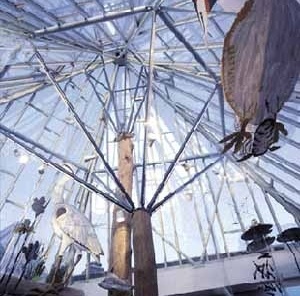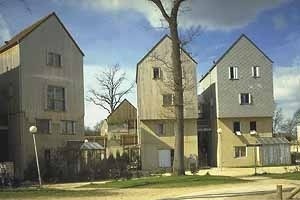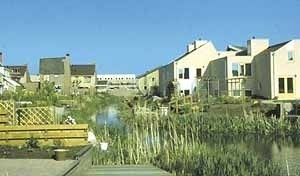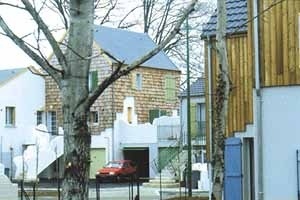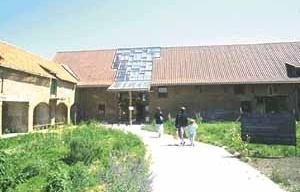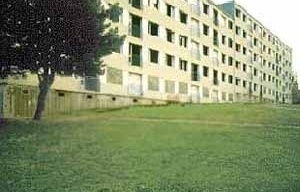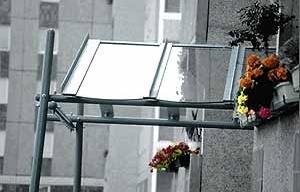Origins
The modern movement is borne from desires: the desire for abstraction, for newness, for rationality, for artificiality, for visible order, for technical sex-appeal, for marvelousness in front of human renewal, for faith in science and its brutality, for architectonic militarism, for definitive works, for objects on the biggest scale possible and above all for a centralisation of authority entrusted into the hands of politicians, government officials and technicians. They are all determined to impose happiness on “the people”, reducing to silence those who over thousands of years had been accustomed to decide themselves about their own landscape.
The modern movement represents the refusal: of tradition, of emotions, of chaos and disorder, of irrationality, of sentimentalism, of the subconscious and the unconscious, of the darkness of the Middle Ages, of the unadmitted influence of the human body upon the surrounding environment, of the trust in decisions made by groups of laymen, of the capacity of the quiet self-management, etc.
The contemporary attitude reconciles us: That attitude doesn’t expresses the rational but the relation through intelligent thought and emotions of the heart, the safeguard of ethnic culture, the love for the creative intelligence of the Middle Ages, homeopathic actions, the holistic vision of reality, evolution, the small scale of intervention, the curiosity in ethnic culture rather than in a technical culture, the anti-authority attitude, the urgent necessity to help our present “decision makers” to understand the historic times in which we are living.
Subsidiarity of decisions
In matters of planning the residential landscape, there are two forms of approach, which are diametrically opposed. The first, a centralised approach decides from top to bottom: the slightest details must obey to the top. It has been created to the image of royalty, then, inspired by 19th century universal suffrage, and founded on technocracy and today's financial globalisation.
The present tendency is rather to use a ramified approach: this of the subsidiarity. The world chatted much about subsidiarity in order to impose the treaty of Maastricht and never more after the signature… There, the details do spontaneously agglomerate into groups that then are embraced by more substantial entities and successively become part of large scale decisions, depending on the weight of the issues. This system is comparable to the psychological organisation of groups…
This second attitude represents the former one’s most radical opposite and unavoidably produces an equally inverse image. This is how the future will require all leaders to assume the role of the attentive servant rather than that of the deaf and brutal master.
Subsidiarity of composition
A new design of residential areas must be in the faithful image of its decisional system: a centralised decision produces an authoritarian and homogenous image: every detail obeys the discipline of the whole.
A decision that is branched out into subsidiaries will offer a complex image, reflecting heterogeneity, evolutionism and co-operation of all successive plan scales.
Thus it appears evident: as long as architecture obeys to the rules of homogeneity and the repetition of identical elements, to discipline of materials, to symmetry, to its self-inflicted inflexible and unchangeable character, and to the three unities of drama (action, time and place), it will remain militaristic and will not be able to express the values of a complex, creative, dynamic and democratic society. It cannot be, by definition, anything other than a totalitarian regime, this is the situation, which characterises our age.
Motives
The architect by himself is not able to abandon his pre-formed conception of culture, created by authoritative and heavy mental images: he must internalise the “disorder” of the people who make use of his creations. This will only be reached through warm community participation (even with a very small group).
Or it will be through the objective study of the complexity of the users (nourished by ethnic respect) and by paying attention to the real inhabitants and not the abstraction which the architect would like them to be (as always occurs). That avoids reducing the people to an insignificant average.
Or the architect himself turns himself into a pluralist through an empathy that will guess forms which are compatible with what spontaneous actions of inhabitants would lead to.
Parallelisms
In the case of developing residential landscapes, actions and declarations, which are too demonstrative, prevent common participation. Only gentle and patient approaches (even if it will achieve revolutionary results) can calmly reach their target, avoiding to forget or to weaken the fundamental opposition to any authoritarian manners!
This evolution can find its parallels to the confrontation at Davos/Porto-Alegre: the real difference lies in the willingness of each of the agents to view the confrontational strategy as a tool to reach an ecological equilibrium that managers are often incapable of deciding upon, or simply to understand it, due to their fears for inducing a disorder that they would not control anymore.
Even if the fundamental reasons are the same, we are talking about a complementary aid for decision making by "ignorant of the art of construction", instead of violent criticism. By all means, what we are describing is a peaceful proceeding of slow efficiency.
Prophets
Let us ask the friendly co-operation of visionaries: for example, Ecologist, Attac, Monde Diplomatique, Friends of the Earth, syndicates, Greenpeace, the Small Peasant Confederations (José Bové), the NGO’s of the speciality, for it is urgent to feel the expressions of the civil society in progress.
The result of recent urban landscape
The modern housing ideology has proven its monstrous effects: "zonings of prefabricated housing" have been established in every country. In the Eastern-European countries alone, 170.000.000 people live (survive) in 70.000.000 prefabricated housing units…and all these units crumble simultaneously (the Chernobyl of social housing).
These habitats are unforgivable from every viewpoint: spiritual, cultural, environmental, technical, residential, economic, social, architectural and from that of civilisation.
Means
demolition: impossible, scandalous, inhumane and desperate
transformation: unaffordable, it would take a century to do so.
inducing its evolution: reoccupying the initial objects by means of successive additions that “cover” the old structure and grow throughout the years, thus affirming a contemporary 'popular' culture shared by a low-tech (adapted) multicultural majority (a mix of cultures, geographical entities and generations). The project will become decentralised, emotional, friendly for the environment (its three factors ecological associated: the social, the psychological and the physical) when deprived of a nostalgia for a mythical past. A future landscape will be put into place, which will be able to actively motivate coming generations, already frustrated by the hideous quality of their actual heritage.
Actions
Reflection, diffusion, the study of prototypes in order to analyse and correct, construction in small portions relating to context, small scale intervention, direct participation of the inhabitants, simultaneous use of the most refined and updated technical and organisational instruments. Deliverance from the ideology of the free market in order to allow for desires of recognition of the Other, universal equity “in progress”, material gains by the cessation of murderous conflicts (they are more expensive than food).
Styles
If it is true that a style of architecture or town planning does not exist which is specifically suited to ecology (styles have to remain local) it is certain that some styles are pertinently incompatible with the concept of ecology. A humanised architecture can not express itself with the concepts of auto-colonisation and the ideologies of worldwide consumerism; it will be rather through a spiritual path that it will be possible to find new forms of expression.
Unanimousness
The environmental impulse is always contagious: it often helps in the co-operation between hetheroclite partners: they become generous. We know that from experience.
Corporate fatalities of the conceiving class
To carry out projects, architects and planners are bound to obey their clients, public or private; without them, their profession would not even exist. Some clients (not too many) show their truly heroic characters by proving they can operate in the fashion of true democracy, without restricting themselves to the ever-technocratic world of public policies or the private always commercialised.
Some experiments have demonstrated ''outside of the system'' possibilities for specific living communities: they end up breathless by the concurrency from institutions, by dangerous means of financing, by conflicts with administrations that have no good feelings about "amateurs" devoid of power, who must frequent their hunting territory.
In which cases the disillusioned souls are thrown back to dream on paper, describing "what could have been done" and drawing out frustrated Utopias. Take political power or become careerists? They find themselves redirected and useless.
Reconciliation
Apparently, ecology is the only way to reconcile the inhabitant with his habitat: the inhabitant has never loved modernity (he has even invented kitsch to exorcise it). To regain diversity and liveliness, we have to "touch base" again, let intuitive influences come around, ''de-domesticate" laymen and then, together with them, create a work of art in plural.
Apparently, ecology is the only way to reconcile the inhabitant with his user: the inhabitant has never liked modernity (he has even invented kitsch to exorcise it). To regain diversity and habitability, we have to "touch base" again, let intuitive ''de-domesticated" laymen influence us, and then, together with them, create a work of art in plural.
What will be the outcome? Only strictly gentle subversion will do, without harshness but dogged, without swerving but unavoidable…
Let us urgently help the G8 to transform itself into a gentle and contemporary urban fellow…
note1
Manifesto for G8 meeting: Symposium Internazionale sulle Politiche di Trasformazione Urbana Ecosostenibile, Padova, Italia, 2 marzo 2001. Lucien Kroll strongly criticises the financial aims of globalisation saying that "globalisation is a spiritual affair, never a financial one". He explains that his studio participation in this symposium is not as just another group of technicians paid to improve the details of a naughty politics and cosmetic a little their image but they are working towards reversing it slowly, without any violence…
about author
Lucien Kroll, architect, honour member of INBAR, Istituto Nazionale de Bioarchitettura.



